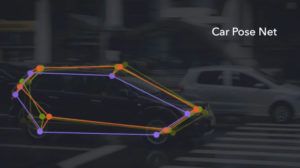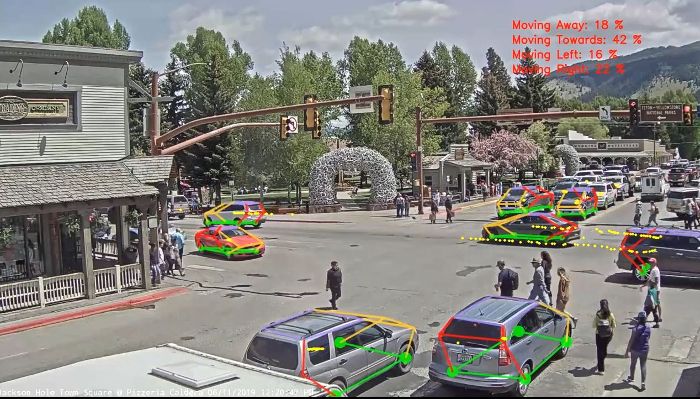A Carnegie Mellon University (CMU) spinout company that is developing cloud-based visual sensing systems, Zensors, has released its latest deep learning technology, Car Pose Net, which is 3D vehicle tracking system that uses existing camera infrastructure.
Previously, tracking rigid, three dimensional (3D) objects such as vehicles using only single-view (2D) cameras was problematic. Car Pose Net fits 3D pose wireframes to cars, improving tracking results, especially in difficult conditions such as snow, varying light conditions or partial visual obstructions. The system unlocks incredible potential for existing city and autonomous vehicle (AV) camera systems. Because the technology can be deployed using legacy camera hardware and Zensors’ edge or cloud compute platforms, more advanced, accurate, and real-time traffic data can be gathered and acted upon.
A developer of artificial intelligence (AI) in vision-based systems, Zensor notes that the most interesting use cases for this type of deep learning were in traffic management and ‘congestion pricing’ models, which is coming to New York City as early as 2021. Other potential applications for Car Pose Net include traffic violation enforcement, including speeding, wrong-way driving, and double-parking detection. Car Pose Net is integrated into Zensors’ platform, and allows city managers to make more data-driven decisions. Camera footage is passed through the deep learning model and turned into statistical data, which can be viewed in charts or real-time dashboards in the Zensors Cloud, or accessed via CSV or API for integration into other systems.
“It’s really the evolution of what is possible with camera-based sensing,” said Anuraag Jain, head of product at Zensors. “The potential to maximize the camera infrastructure that a city already owns to generate new data streams is really exciting. Because we’re able to work off of existing infrastructure, our time to deploy is days or weeks, rather than the months or even years needed to blanket a city in new sensors. This makes the capital investment needed to deploy significantly less than other, more hardware dependent tracking systems.”![]()





